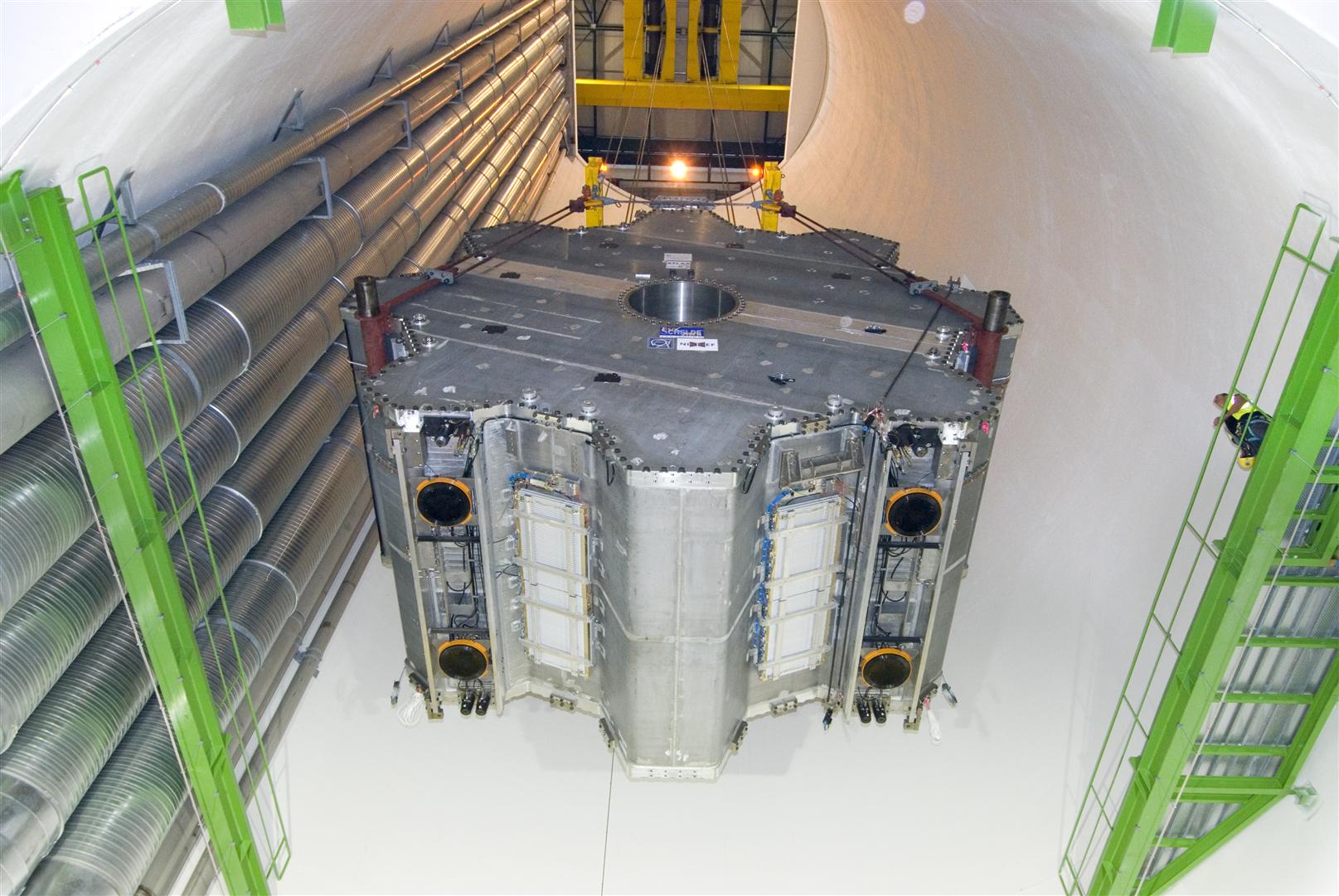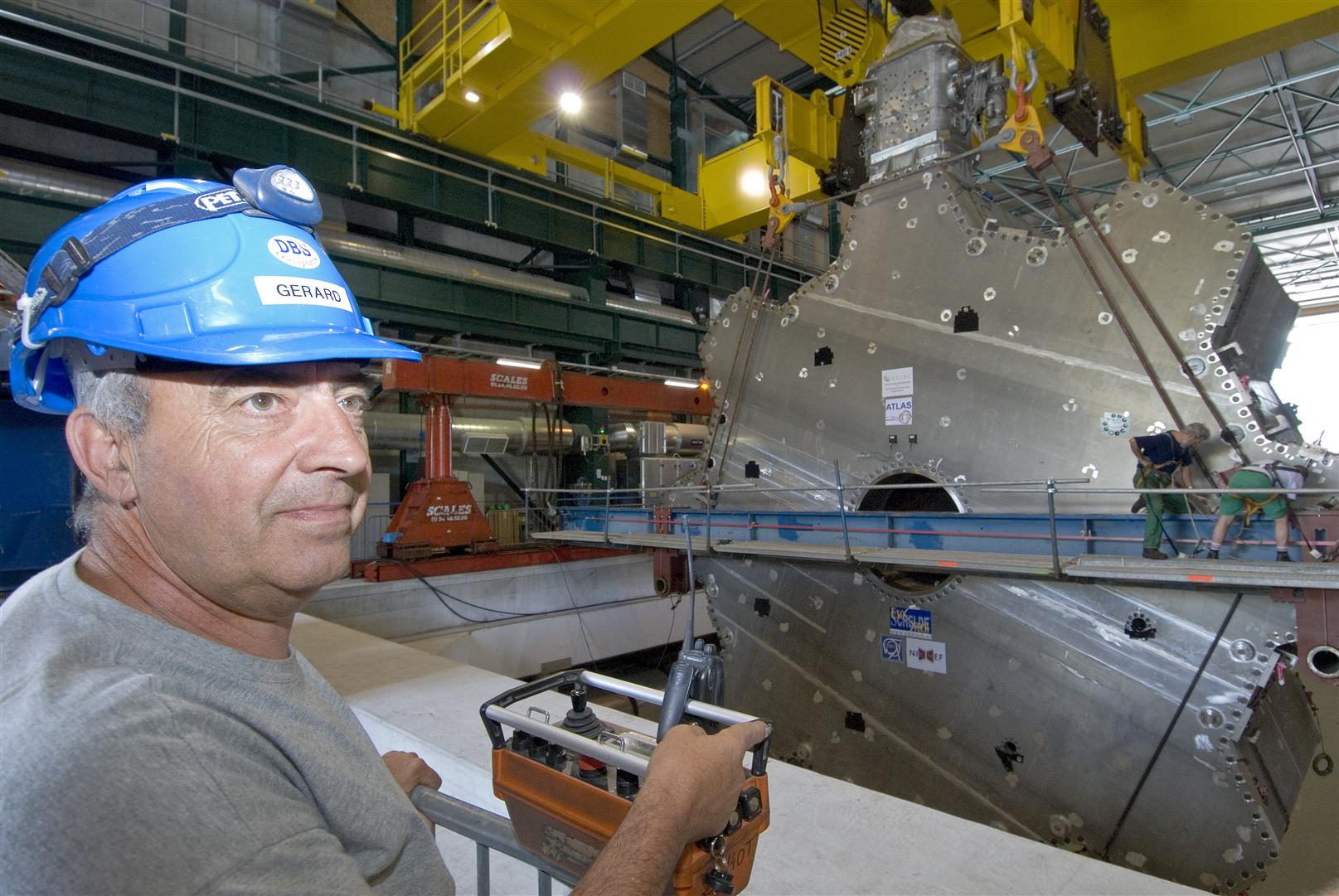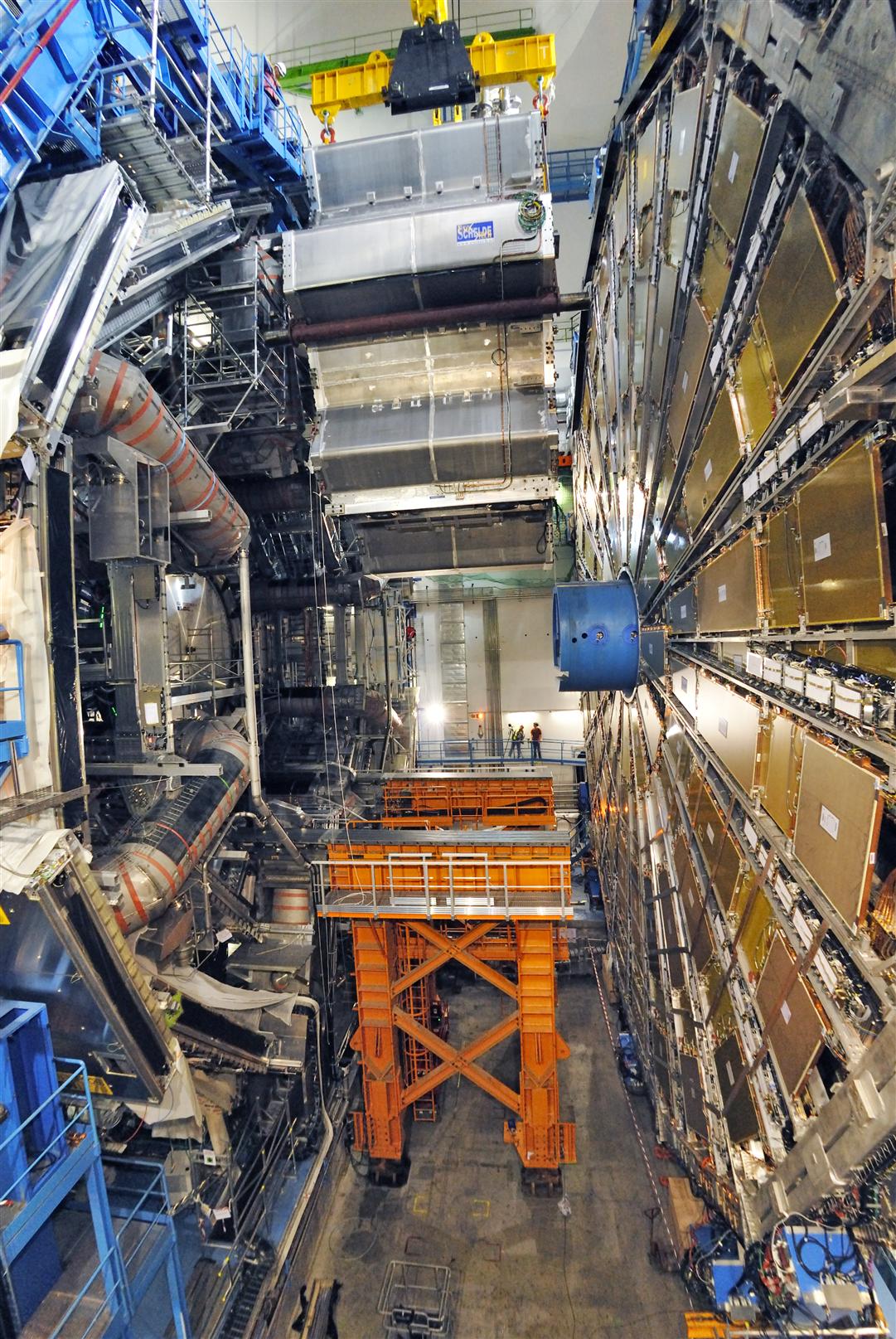ATLAS - first end-cap in place
The first end-cap of the ATLAS toroid magnet has been lowered into the ATLAS cavern three weeks after leaving its assembly hall.
It was close to midnight on Wednesday 13 June when the installation teams from ATLAS, PH-ATI and TS were at last able to breathe a sigh of relief. After a delicate lowering operation lasting more than two nerve-tingling hours, the gigantic toroid magnet end-cap had come to rest on the cavern floor. What had been a perilous adventure from the technical viewpoint drew to a close as the end-cap fitted snugly between the muon chamber wheels and the rest of the detector, to a precision of 2 millimetres and with a margin of 10 centimetres on either side.
The 13-metre high, 240-tonne end-cap had arrived on the doorstep of the ATLAS building on 29 May (see Bulletin 24-25/2007). But it took another six days before it could cross the threshold. A slope in front of the building, designed to collect and drain rainwater, was preventing it from entering the building. The recess therefore had to be filled in and drains installed. The wet weather conditions made the fill material unstable, so concrete blocks had to be installed on either side, and steel plates were laid on top of the fill material to reinforce the whole structure, raising it by a few centimetres. "Because of this, we had to cut out one of the roof girders in the eaves to make room for the end-cap to pass through," explained Arnaud Foussat, Project Leader for the installation of the ATLAS toroid magnet end-cap. A 5-metre portion between the top of the main door and the roof had already been removed.
But the difficulties didn’t end there. Once inside the building, the end-cap was lifted by a mobile crane and secured to two SCALES gantry cranes, positioned on either side of the shaft. On these gantry cranes it was then moved across the hall, just two centimetres above the ground, to the second shaft at the Geneva end. The next problem was that the end-cap itself was higher than the 2x140 tonne overhead travelling crane to be used to lower it into the cavern. "Environmental regulations prevented us from building the roof any higher," explained François Butin, Head of the ATLAS experimental area. In order to secure the end-cap to the overhead travelling crane, it was necessary to suspend it above the shaft using the two gantry cranes. Then, using a system of jacks, it was lowered by 5 metres. Now at the correct height, it could be secured to the overhead travelling crane and the operation to lower it onto the rails of the reception vehicle, 80 metres below, could commence.
The toroid magnet end-cap is certainly the component that has been the most difficult to transport and has given the ATLAS teams many a sleepless night. The whole operation will have to be repeated on 12 July for the second end-cap, but the teams now have valuable experience under their belts and, according to François Butin, should not have as many problems. The operation has been a long time in preparation, and many scenarios were considered. Originally, the roof was designed to be retractable, so the end-cap could then have been lifted into the building by a mega-crane. But this solution ultimately proved to be far too expensive. And in retrospect, pulling away the roof protecting the ATLAS cavern in such a rainy June would not have been ideal...




